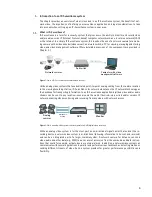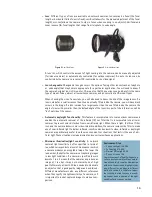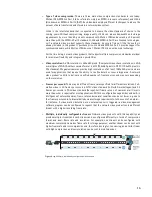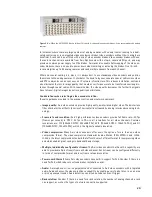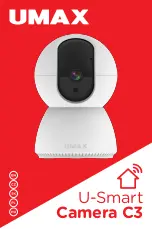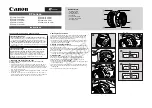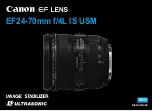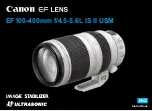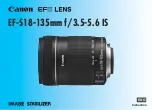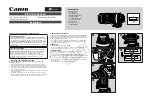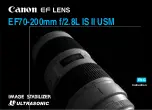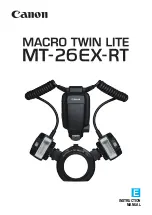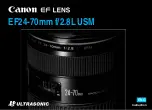
9
1.4.
Defining your surveillance application
The first and most important step in implementing a
video surveillance installation is determining the goal
of your surveillance application. It is a good idea to
map out where you want video surveillance to take
place and for what purpose (i.e. surveillance overview,
identification, people counting). This will determine the
type and number of network cameras, as well as other
components to install and can influence the overall
cost of the installation. More information about how to
select a network camera and other components is cov-
ered in Chapter 2.
Legal considerations
Video surveillance can be restricted or prohibited by laws that vary from
country to country. It is advisable to check the laws in your local region
before installing a video surveillance system. There may be legislation or
guidelines covering the following:
a)
License.
You may need to register or get a license from an authority to
conduct video surveillance, particularly in public areas.
b)
Purpose of the surveillance equipment.
Is it in accordance with what
is permitted by the laws in your area?
c)
Position or location of the equipment.
Is it positioned or located in such a way that it only
monitors the spaces which the equipment is intended to cover, and if unintended areas are covered,
would you have to consult with the owners of such spaces? There may be rules covering areas where
video surveillance is prohibited; for example, toilets and changing rooms in a retail environment.
d)
Notification.
You may have to place signs to warn the public that they are entering a zone covered
by surveillance equipment and there may be rules regarding the signage.
e)
Quality of images.
There may be rules regarding the quality of images, which can affect what may
be permitted or acceptable for use as evidence in court.
f)
Video format.
Police authorities may require that the video format be ones that they can handle.
g)
Information provided in recorded video.
Video recordings, for instance, may be required to have
time and date stamped.
h)
Processing of images.
There may be rules regulating how long images should be retained, who can
view such images and where recorded images can be viewed. You may have to keep an audit log.
i) There may be
requirements for drawings
of where cameras are placed.
j)
Personnel training.
There may be regulations that require operators to be trained in security and
disclosure policies, as well as privacy issues.
k)
Access to and disclosure of images to third parties.
There may be restrictions on who can access
the images and how images can be shown. For example, if video is to be disclosed to the media, im-
ages of individuals may have to be disguised or blurred.
l)
Recording of sound.
A permit may be required for recording sound in addition to video.
m)
Regular system checks.
There may be guidelines on how often and thorough a company should
perform system checks to make sure all equipment are operating as they should.
1.3.
Содержание IP-Surveillance system
Страница 49: ...49 ...



